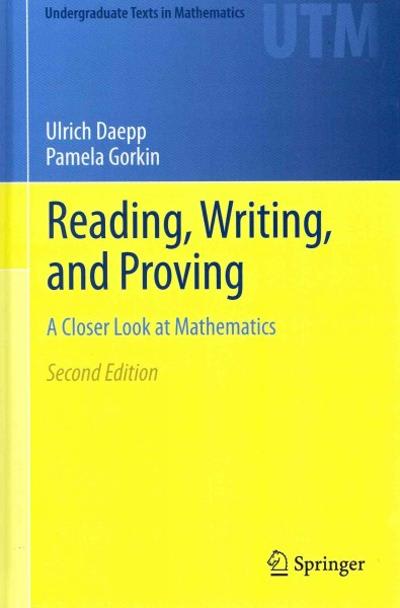Question
STA 144 Week 8 Critical Assignment Project PART 1 . The data below examine the relationship between two variables, the quality of marriage and the
STA 144 Week 8 Critical Assignment Project
PART 1. The data below examine the relationship between two variables, the quality of marriage and the quality of parent-child relationships. Use SPSS for this assignment.
Quality of Marriage Quality of the Parent-Child Relationship
76 43
81 33
78 23
76 34
76 31
78 51
76 56
78 43
98 44
88 45
76 32
66 33
44 28
67 39
65 31
59 38
87 21
77 27
79 43
85 46
68 41
76 41
77 48
98 56
98 56
99 55
98 45
87 68
67 54
78 33
Using the above data:
- Classify the levels of the data, meaning, tell me if the data are nominal, ordinal, interval, or ratio (pick just one).
- Calculate measures of central tendency (mean, median, and mode) and variability (range, SD, and variance) (attached the SPSS table below).
- Write one null and one research hypotheses for the data above.
- This question has multiple parts:
- Create normal and binomial curves/graphs or run the test of normality to show if the data is normally distributed or not. Include the graphs/curves/table below.
- Interpret what you see going on with the graphs/curve/table (are they normally distributed or not? Why or why not).
- This question has multiple parts:
- Run a Pearson correlation for the above data and include the correlation table from SPSS below.
- Interpret the results (interpret these data using the general range of very weak to very strong).
- From the list below, choose the statistical test (which mean pick ONE) you think is the most appropriate to determine the value for the data (you can copy the results from your SPSS output and past them here:
- One sample (Mean) test
- Two samples (independent t-test) test
- Paired/related sample t tests
- Using the 10 steps for testing hypotheses (listed below and under Week 8 lecture), determine if the null hypothesis can be rejected or fail to be rejected. The Ten Steps could be found under Week 8 lecture.
Step 1: Research Hypothesis?
Step 2: Null Hypothesis?
Step 3: One or two tails?
Step 4: Alpha level?
Step 5: What test?
Step 6: Degrees of Freedom?
Step 7: Critical Value?
Step 8: Decision Rule?
Step 9: Finding?
Step 10: Conclusion?
PART 2
1. A random sample of 10 parking meters in a beach community showed the following incomes for a day. Assume the incomes are normally distributed.
$3.60, $4.50, $2.80, $6.30, $2.60, $5.20, $6.75, $4.25, $8.00, $3.00.
- Find the 95% confidence interval for the true mean.
2. We ask whether people will score higher or lower on a questionnaire of their well-being when they are exposed to sunshine compared to when they're not exposed to sunshine. A sample of 8 people is first measured after low levels of sunshine exposure and then again after high levels of exposure. We get the following pairs of scores:
Low: 14 13 17 15 18 17 14 16
High: 18 12 20 19 22 19 19 16
- State the null and alternative hypotheses.
- Using an alpha = 0.05, what is t (crit)?
- Using SPSS, calculate t (obt)) (Use paired/related sample t test to obtain this info)
- What should you conclude?
3. We investigate the effects of sensitivity training on a policeman's effectiveness at resolving domestic disputes (comparing independent samples of policemen who had or had not completed the training). The dependent variable was their ability to successful resolve domestic disputes. The following scores were obtained:
| No course | Course |
| 11 | 13 |
| 14 | 16 |
| 10 | 14 |
| 12 | 17 |
| 8 | 11 |
| 15 | 14 |
| 12 | 15 |
| 13 | 18 |
| 9 | 12 |
| 11 | 11 |
- State the null and alternative hypotheses.
- Using an alpha = 0.05, what is t (crit)?
- Using SPSS, calculate t (obt) (Use Independent Samples t test to get this info)
- What should you conclude?
4. On a national test of "mental intensity,"m is 20 and the standard deviation 6.28.Students in your class produce the following scores:
25, 26, 34, 14, 33, 29, 22, 18, 16, 13, 21, 20, 22, 21, 34, 30
Using the criterion of 0.05 and both tails of the sampling distribution, determine if your class is representative of the population.
- State the null and alternative hypotheses.
- Using an alpha = 0.05, what is t (crit)?
- Using SPSS, calculate t (obt) (Use One Sample t test to get this info)
- What should you conclude?
Step by Step Solution
There are 3 Steps involved in it
Step: 1

Get Instant Access to Expert-Tailored Solutions
See step-by-step solutions with expert insights and AI powered tools for academic success
Step: 2

Step: 3

Ace Your Homework with AI
Get the answers you need in no time with our AI-driven, step-by-step assistance
Get Started


